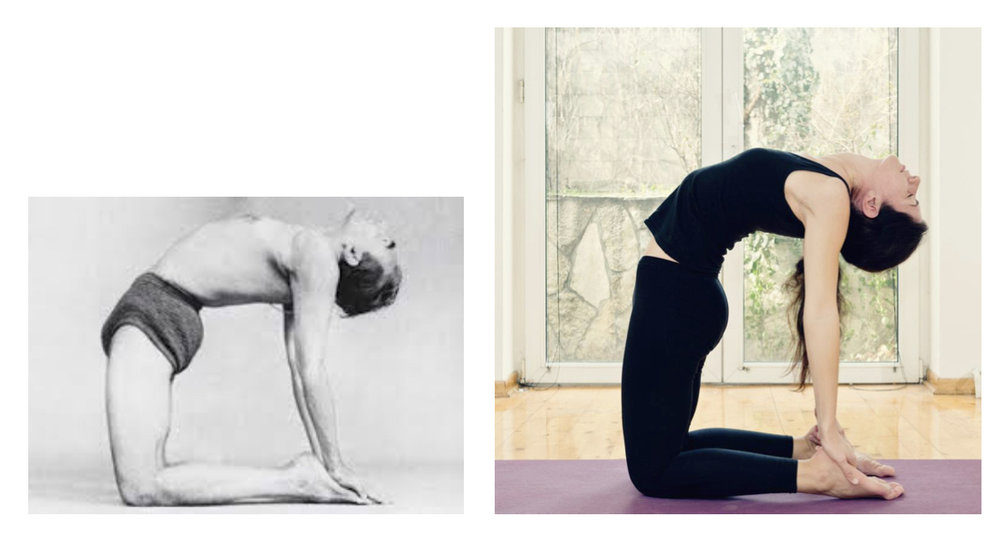Spineful Yoga
Because of the Corvid-19 situation, all classes are postponed until it’s once again safe to gather in groups.

In Light on Yoga, BKS Iyengar demonstrates the poses in natural posture.
He has a short, sharp arch, low in his back, where his last lumbar vertabra meets his sacrum. Then his spine extends in a straight line towards his head.
Modern bodies, shaped by modern posture, no longer hinge at the natural arch. Instead, as in the Ustrasana on the right, the hinge is much higher, in the thoracic spine. Unfortunately, there’s no anatomical hinge there, only a disc that’s gaping at the front and squeezed at the back.
Spineful Yoga is an asana practice based on alignment with gravity.
We look at the whole body in space, and start with the optimal alignment of the pelvis and spine. Spineful yoga starts on the mat but continues 24 hours a day as we take gravity-based alignment into our daily lives.
Like Spinefulness itself, Spineful yoga is an awareness practice that allow us to maintain a connection with our physical body in every moment. To learn more about the specifics, go to: What is Spineful Yoga and Why Do We Need It?